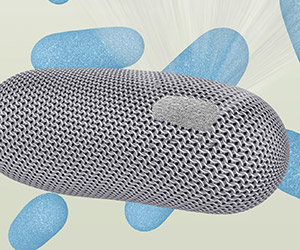
Many bacteria and archaea encase themselves within a self-assembling protective shell of S-layer proteins, like chainmail armor. A multidisciplinary team of Molecular Foundry researchers have uncovered key details in this natural process that can be used for the self-assembly of nanomaterials into complex two- and three-dimensional structures.
Caroline Ajo-Franklin from the Foundry’s Biological Nanostructures Facility led the study that used high-throughput light scattering measurements to investigate the self-assembly of 2D nanosheets from a common bacterial surface layer (S-layer) protein. This protein, called “SbpA,” forms the protective armor for Lysinibacillus sphaericus, a soil bacterium used as a toxin to control mosquitoes. The investigation revealed that calcium ions play a key role in how this armor assembles. It was discovered that calcium ions not only trigger the folding of the protein into the correct shape for nanosheet formation, but also serve to bind the nanosheets together.

